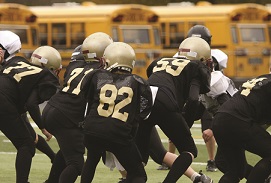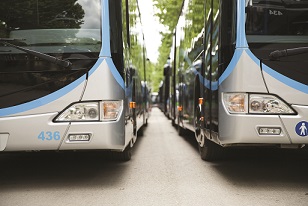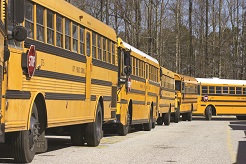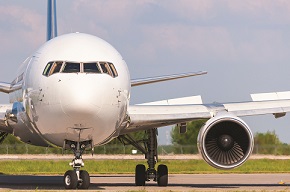
 Transportation. Travel. Whatever label you slap on it, getting from Point A to Point B is one of the most important aspects of an event owner’s job. Making the right choice can enhance the competitive experience. Making the wrong choice – well, let’s just say it won’t be your most shining moment (nor one that people will let you forget for a long time.)
Transportation. Travel. Whatever label you slap on it, getting from Point A to Point B is one of the most important aspects of an event owner’s job. Making the right choice can enhance the competitive experience. Making the wrong choice – well, let’s just say it won’t be your most shining moment (nor one that people will let you forget for a long time.)
There are a number of options for sports travel, and they come in a wide range of price points. There is no one ‘right’ answer, simply the answer that is right for each event. With that in mind, here is a review of some popular options:
Road travel: While many local tournaments do rely on the always dependable carpool mode (and these days, the sharing economy has given us other great options such as Uber and Lyft), this article will focus on moving a team or a group of athletes as a unit. That still leaves several choices:
Mini-buses/mini-coaches/shuttles: These can move about 25 to 30 people at a time, and are an excellent option if a team finds itself in need of a short-hop solution, such as getting to and from the airport, to and from a hotel, or to and from a venue. The downfall is that most of these modes of transit do not offer rest rooms. These vehicles can hold a limited amount of luggage and sports equipment, which may present complications.
Full-size motor coach or tour bus: This is obviously a bigger vehicle; most will seat 45-55 passengers. Players will be happier about amenities, as motor coaches and tour buses generally include rest rooms, individual climate control, lighting for each seat and in-transit entertainment systems. Another advantage is that these vehicles have large luggage compartments where bags, equipment and more can be stored.
 School buses or other economy private buses: If you’ve ever been on a school bus (and who hasn’t?), you already know the set-up. These vehicles are efficient for moving a large group and generally cost quite a bit less than a motor coach/tour bus. However, they lack many of the creature comforts, including rest rooms and storage space.
School buses or other economy private buses: If you’ve ever been on a school bus (and who hasn’t?), you already know the set-up. These vehicles are efficient for moving a large group and generally cost quite a bit less than a motor coach/tour bus. However, they lack many of the creature comforts, including rest rooms and storage space.
Obviously, all of these road travel options have advantages and drawbacks and it is up to the event owner to weigh them. Group road travel will lessen or eliminate parking fees, and can make it easy to get team members to and from restaurants, entertainment venues or other locations for after-hours activities. Many vehicles offer Wi-Fi and outlets for charging electronics - something that cannot be overemphasized in the information age.
If you decide to go with one of these options, it is essential to check references. Find out if the company has moved sports teams in the past. Talk to representatives of those teams and ask whether the vehicles were on time or whether any unexpected problems or questions popped up. Does the company have liability coverage? If so, how much? How many in-service hours has the driver seen? Does the company take care of any parking fees, tolls, gas costs, etc.? Ask all the essential questions before you sign a contract. In many cases, the local sports commission or CVB may have companies they have already vetted and can recommend, so be sure to reach out to them as well.
Air Travel: Air travel holds the obvious advantage of getting the team to the event much faster than road travel. There are two main types of air travel that can be used to transport sports teams: commercial airlines and private jet charters.
Commercial airlines: Traveling by commercial airline is usually pricier than road travel, but the time saved may make it well worthwhile. The team will arrive together and refreshed, which may afford an advantage at game time.
If the amount of distance between locations eliminates road travel as an option, team budgets will usually be able to cover commercial air travel easily. Instead of purchasing tickets individually, however, it is important to look into group air travel options. Group air travel is available for groups of 10 or more and can save hassles, as the tickets can be held for several weeks without specific traveler names.
 Working with a professional travel company can help you to get deposits for holding the seats waived and may help you to get the best deal on commercial airline tickets. You may also be able to work with the airline regarding cancelation policies if the event is cancelled.
Working with a professional travel company can help you to get deposits for holding the seats waived and may help you to get the best deal on commercial airline tickets. You may also be able to work with the airline regarding cancelation policies if the event is cancelled.
There are several disadvantages to utilizing commercial air travel, however. Luggage space may be limited or there may be additional fees for carrying the amount of luggage required for the event. Luggage will also be transported along with many other passengers’ luggage, so there is always the potential for lost luggage. The team and any additional passengers that will be traveling with the team will also have to be subjected to long security lines and waits.
Additionally, the team must travel according to the schedules set by the airline. This can be highly inconvenient, as games often end late at night and exact game times can be unpredictable if games extend to overtime.
Private jet charter: Using a private jet charter for sports team travel is the most attractive and luxurious option. This is the option that professional teams most often use and it affords many advantages. Event owners can dictate the flight schedule, so there is no need to rush or stress over everyone getting to the airport on time when traveling to or from game locations. Even the size of the plane can be selected according to your team needs.
Private jet charter agencies will usually take care of all travel needs as requested. Shuttles may be provided to bring the team to the hotel upon arrival and pick the team up for departure. Once at the airport or FBO, the team can board the aircraft without waiting in line or going through security.
The jet charter agency will take care of all luggage and equipment. While there may be restrictions for luggage based on the size of the plane, these restrictions are likely to be much more accommodating than commercial airlines. There are no worries about lost luggage or poor handling of expensive equipment as there may be with commercial airlines, as the entire plane belongs to the team for the duration of the flight.
Traveling aboard a sports team private jet is a comfortable experience for players. Depending on the size of the team, the size of the plane, and the duration of the flight there may be sleeping accommodations, a lounge area for relaxation, a dining table, a meeting area, and plush comfortable seating. Private jet charter agencies will also work hard to accommodate requests for things like video game systems, specific bedding, and anything else that may help team members to relax before the game.
 It is possible to control the food that is served on private jet charters, as well, which may be a huge advantage before big games. Players that have trained hard and eaten properly for months leading up to games will not have their efforts derailed with poor quality meals while taking a private jet.
It is possible to control the food that is served on private jet charters, as well, which may be a huge advantage before big games. Players that have trained hard and eaten properly for months leading up to games will not have their efforts derailed with poor quality meals while taking a private jet.
While private jet charters are more costly than other sports team transportation options, a bit of the cost may be defrayed by being able to book hotel stays with precision and leave immediately after games no matter what the time. Allowing the players to rest and recuperate adequately before games may also be a priceless advantage.
In conclusion, there are many transportation options for sports team travel, with many pros and cons to each. An experienced sports team travel management company can evaluate the specific needs of your team and help you determine the option that best fits your needs and budget.
Travel management companies have extensive experience dealing with a number of different companies that provide each type of transportation, so you can be sure that you are getting the best deal and working with a company that has a good reputation for providing quality sports team travel.

